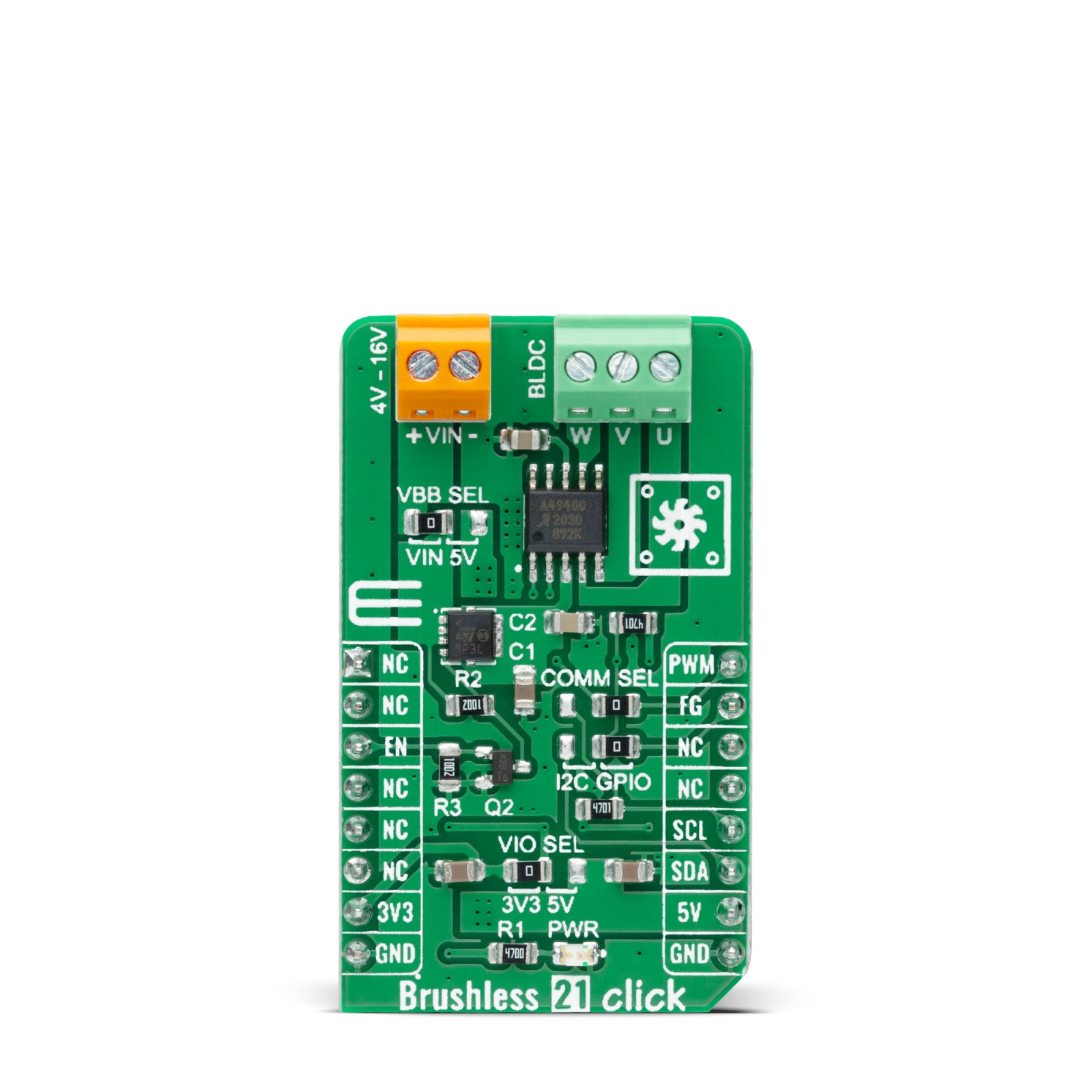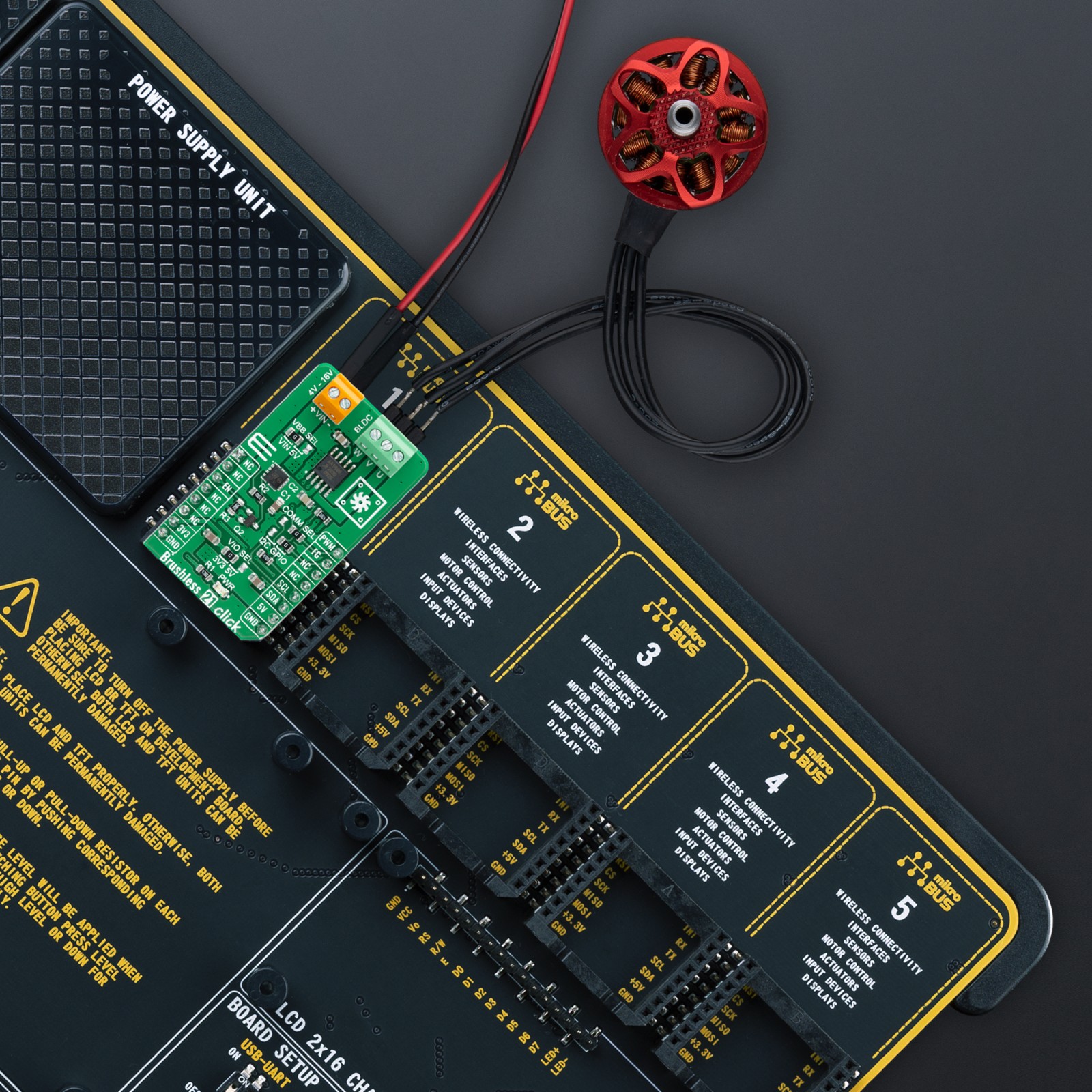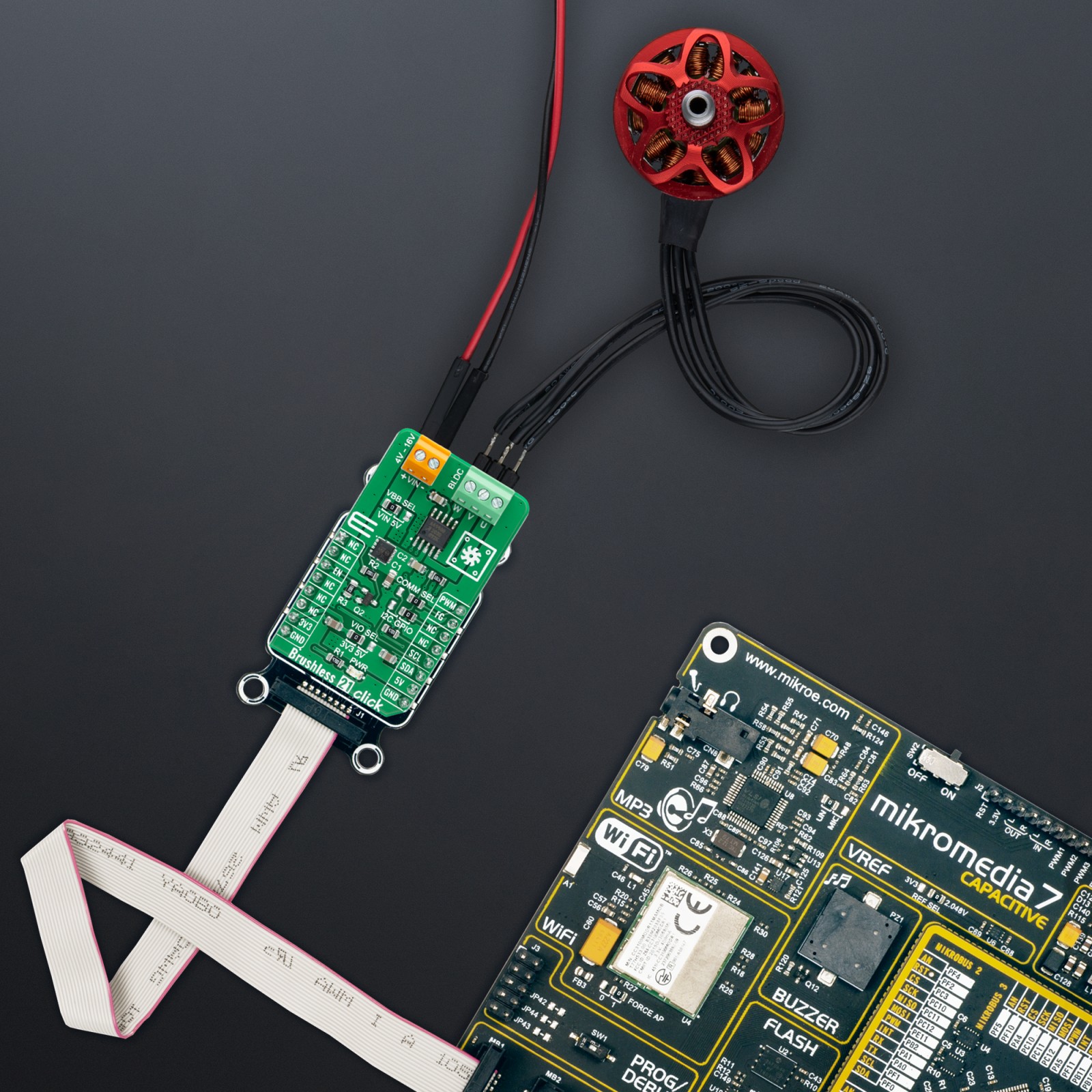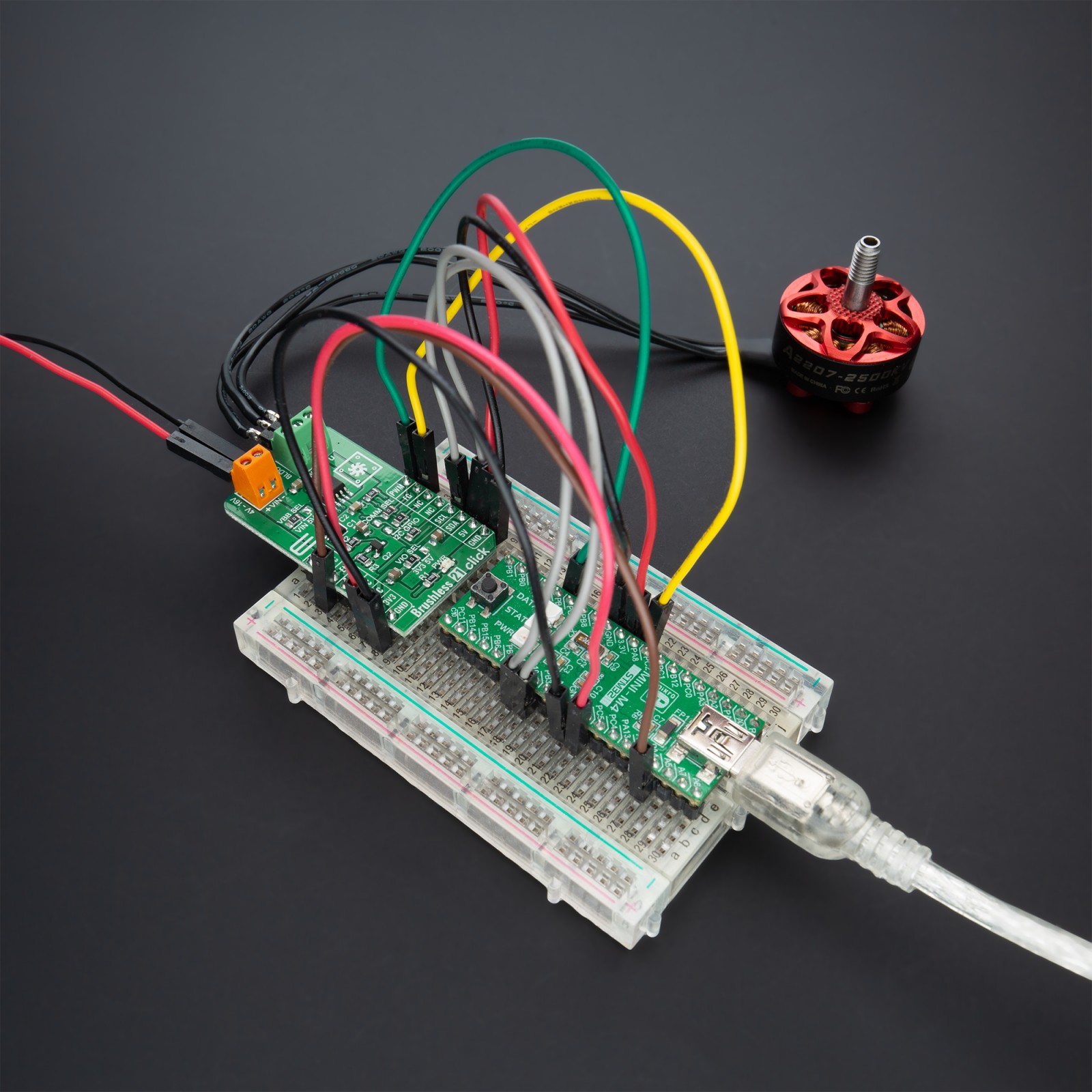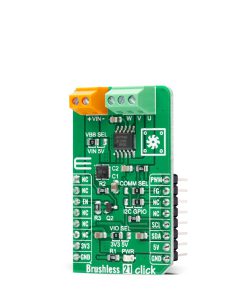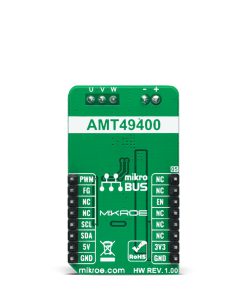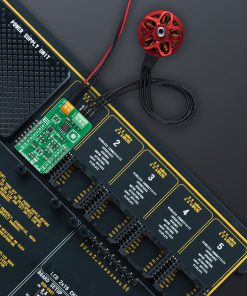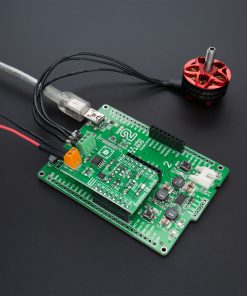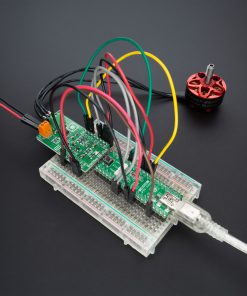Brushless 21 Click
R335.00 ex. VAT
Brushless 21 Click is a compact add-on board suitable for controlling brushless DC (BLDC) motors with any MCU. This board features the AMT49400, an advanced 3-phase, sensorless BLDC motor driver with integrated power MOSFETs from Allegro Microsystems. The AMT49400 is rated for an operating voltage range from 4V to 16V. Motor rotation speed is controlled by applying a duty cycle command to the PWM input, while a simple I2C interface is provided for setting motor-rated voltage, rated current, rated speed, resistance, and startup profiles. Besides, it features additional diagnostic circuits and drive-control functions such as motor lock detection and over-current (short) protection. This Click board™ makes the perfect solution for home appliances such as pumps and cooling fans, industrial equipment, and more.
Brushless 21 Click is supported by a mikroSDK compliant library, which includes functions that simplify software development. This Click board™ comes as a fully tested product, ready to be used on a system equipped with the mikroBUS™ socket.
Stock: Lead-time applicable.
| 5+ | R318.25 |
| 10+ | R301.50 |
| 15+ | R284.75 |
| 20+ | R274.03 |

